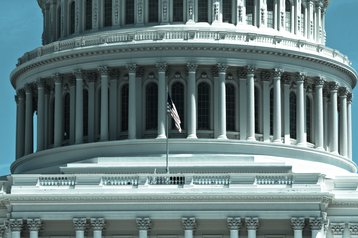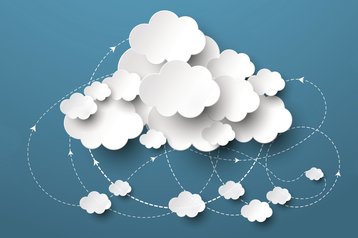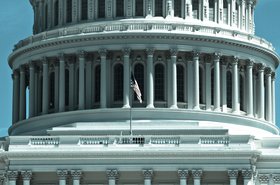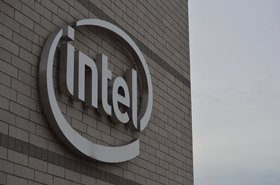My passion for information technology started at an early age. By my senior year of high school, I began my thirty-year IT career path as a Cobol programmer for a government agency. Over time I had the opportunity to serve in many other capacities including help desk and support operations, application development, overseeing large infrastructure deployments, cyber security and, at the peak of my government career, working as the CIO for the Counterintelligence Field Activity in the Department of Defense (DoD), and the US Marshals in the Department of Justice.
Now working at Intel, my career has come full circle. I have an opportunity to put my past experiences in government agencies to bear on shaping new products, services, and IT approaches.
The dynamic nature of many government agencies dictates the need for effective IT infrastructure, services and capabilities. Especially during my time with the DoD and the US Marshals, a “mission critical” project was no exaggeration. We needed to ensure that men and women on the ground had the meaningful insights necessary to accomplish their jobs. The right IT solutions, at the right time and in the right place, ultimately helped to save lives.
Keeping up with the private sector
Reflecting upon working in government, academia, and now the corporate sector, I find that the only constant is change itself. CIOs must, therefore, act as agents of change, consistently evaluating and advocating for new IT approaches and technologies which have the potential for immediate value to an organization.
Today, private sector corporations of all sizes recognize the accelerated pace of global business and have modernized their technology infrastructure to provide deeper business insights, bring new products to market faster, and create new AI-based services like self-driving vehicles to differentiate and compete in today’s market. Being late to the game, and without the prowess of modern IT approaches, they risk obsolescence.
Unfortunately, IT transformation among government agencies generally moves at a slower pace. Many agencies lag three-to-ten years behind their private sector enterprise counterparts. This directly impacts the efficiency and agility of the organization, the ability to provide timely and relevant services to customers, and in the case of DoD and DOJ, directly impacts the ability to support the warfighter and law enforcement professional.
There is good news, however: According to a recent survey of 300 Federal finance, procurement, and IT professionals:
- 83 percent agree their agency’s future mission success depends on IT modernization.
- 94 percent of Feds have felt a shift in momentum toward the future state of Federal IT.
- 76 percent expect their IT modernization budgets to increase in FY19.
As these points reinforce, many agencies recognize the value of IT transformation and want to make the necessary steps toward that vision. The challenge, of course, is getting there.
Barriers to change
Several factors create unique obstacles and complexities for government agencies wishing to transform their IT infrastructure. First, many depend on legacy infrastructure and applications which have endured a great deal of modification over the years. A specially-tailored and highly-customized software environment makes it harder to manage, secure, and modernize.
IT budget represents another potential hindrance to change. Some agencies perceive their IT team as a “cost center” or a “service provider” rather than a strategic partner. Tight budgets mean that available funds must first apply toward the management and maintenance of existing infrastructure. However, this approach perpetuates a “Catch 22”. Old hardware simply cannot keep up with the pace of change today. Modern hardware and software which evolve at the pace of Moore’s Law enable greater speed, agility, TCO, and many more benefits.
Compounding the challenge is a proliferation of technologies like Internet of Things (IoT) devices, 5G networks, and edge-based workloads. In short, the government’s IT adoption process does not keep pace with technological advancements, improvements, and innovations embraced with enthusiasm in the private sector.
Complex and critical cybersecurity represents another major consideration. Around the globe, most countries prioritize modernizing and hardening their IT infrastructure to protect valuable and classified information. The United States government must keep pace with other nations in scenarios involving sensitive and classified data exchanged between agencies, or across continents. A data breach can have serious repercussions, so security must be baked into the overall infrastructure at all levels starting at the silicon layer.
For government agencies and the private sector alike, the data deluge creates new opportunities too. Determining the ideal data management strategy – tapping the public cloud, private cloud, or edge computing – can empower the right people with the right information. Faster data filtering and aggregation enables more nimble processes and actionable insights. In the case of the US Post Office, modern IT offer efficiencies to speed the process of sorting and delivering mail. For other organizations like the DoD, insights from real-time data can inform life or death decisions. Modern organizations must have the ability to move faster, store more, and process everything.
All these factors combined make IT transformation among government agencies a difficult problem to solve holistically. Maintaining and patching legacy infrastructure addresses immediate concerns, but aging IT can hamper a government agency’s function. In contrast, the latest technologies and methodologies can accelerate it.
Embracing IT transformation
While each government agency has unique needs and challenges, a multi-pronged approach will help the CIO and the IT team navigate in a time of rapid technological change.
First off, CIOs at government agencies must always maximize their IT budgets to prioritize accomplishment of their core mission. A solid starting point for IT transformation involves an honest assessment of the legacy IT infrastructure’s capability versus the prowess of newer technologies. What works well? What can be improved? Is end-to-end security enabled? What is the ideal hosting environment for key workloads? Can cloud, edge, or virtualized computing help? Questions like these will help guide the modernization process and help prioritize the needed changes while remaining within budget. An IT transformation technical strategy should always be aligned to your mission/business strategy. We transform IT to enable the mission, not for IT's sake.
In many cases, a hybrid cloud solution offers an excellent vehicle toward modernization. The various cloud hosting options make it possible to architect solutions which place data – and the applications depending on it – in the ideal place for optimal execution.
Relatively speaking, though, the technology component of IT transformation is the easy part. Often, a more challenging hurdle facing IT transformation is the “cultural” component across a governmental organization. Obtaining buy-in at all levels of the organization is central to success. A CIO must help top executives understand the rationale for modernized technology infrastructure and how those strategic investments can further and accelerate an agency’s core mission. Workforce strategy is equally important. The IT staff must have an opportunity to expand their knowledge and inject new skills to support the transformative IT approaches. Without top-to-bottom staff buy-in recognizing the value of a modernized IT vision, an IT team will likely face an uphill battle when attempting to implement it.
Today, many government agencies involve trusted third-party advisors to help to architect and implement infrastructure solutions. A large ecosystem of cloud service providers (CSP), OEMs, and ISVs offer highly-effective solutions which augment on-premise solutions to incorporate a distributed architecture. As a result, the boundaries are blurring for data and application hosting and portability. Data and workloads can be placed for easier, secure access by end-users while maintaining and enforcing government security protocols.
IT transformation brings with it many new approaches to problem-solving too. Beyond putting each workload in the ideal environment, new capabilities like artificial intelligence (AI) can offer profound benefits. In the private sector machine learning and deep learning help businesses make more nimble decisions, obtain more meaningful customer insights, and bring products to market faster. In the government sector, research organizations tap advanced analytics, modeling, and AI to derive scientific insights like predictive analysis of weather patterns, facial recognition, cybersecurity, and mechanical simulations. As computing power increases, AI’s capability rises with it, providing incredible value and deeper insight over time.
Start today
Government institutions have always considered IT an important component and enabler for fulfilling their respective functions. However, those clinging to legacy approaches risk becoming obsolete. IT transformation is no longer optional. It is mission critical.






